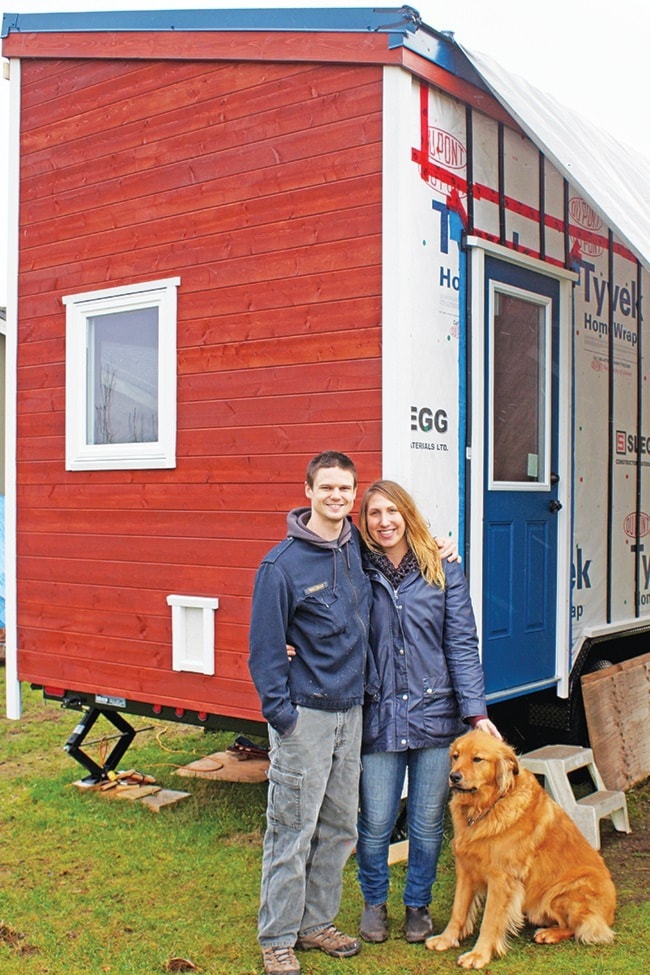When it comes to housing, size does matter.
In the case of Jacob Stevenson and Kiva Ganie, the couple discovered that a building a tiny home meant they could actually afford to own the roof over their heads.
"It wasn't even on our radar, owning a house," said Stevenson, who added that he and Ganie had previously rented a one-bedroom apartment.
The couple first learned about the tiny house movement, which advocates drastically downsizing homes for economic and environmental purposes, from a documentary by Kirsten Dirksen titled We the Tiny House People.
"I thought, 'Wow, it's like a giant fort. I want one,'" Ganie said with a laugh.
But after more research, including an overnight stay in a tiny house in Portland, Oregon, and doing a few calculations, the Nanoose-based couple seriously decided this was the project for them.
They set out a budget of $25,000 for their "Tiny Nest" project, which is close to the cost of a down payment on an average home in the area.
According to the Vancouver Island Real Estate Board, the average sale price for a single-family residential unit for the Parksville/Qualicum Beach area in 2014 was $397,566.
On the rental side of the market, the Canadian Mortgage and Housing Corporation reported the average rent for a two-bed room apartment in the area was $776 as of Oct. 2014.
While the price might be right, the compromise is on space. According to Ganie, their house covers less than 200 square feet. That is truly tiny compared to the average new single-detached home, which the Canadian Home Builder's Association reported in their 2014 survey as being around 2,000 sq. ft.
Still, Stevenson and Ganie designed the Tiny Nest to be fully stocked with a living room, a bathroom split into a toilet room and a shower room, storage and a kitchen with sink, induction stove and an oven on the main floor. The bedroom, complete with king-sized bed, will be located upstairs in the loft. Their heat will be propane-powered.
The smaller space also helps save dollars in other ways too. "Daily cost of living will be smaller," said Ganie. Stevenson also added that he expects the cost of maintaining the building to be less expensive as well.
The couple started construction of their wooden home in July after researching normal building information and scaling that down to their needs.
"We're just building it to highest quality standards that we can and incorporating all the best practices from various codes wherever possible," said Stevenson, an electrician.
From the start, Stevenson and Ganie have also shared every aspect of their home's design and build on the Tiny Nest Project YouTube channel. "They (YouTube viewers) are going to have resources that we wish we'd had," said Stevenson.
So far, Kiva said they have over 150,000 views and have also received countless building tips from viewers.
"We're putting our heart and soul into making this right," said Stevenson.
They hope to complete the Tiny Nest and move in permanently with their dog Ben sometime within the next few months .
If you're curious to see the project take shape, visit www.tinynestproject.com.
